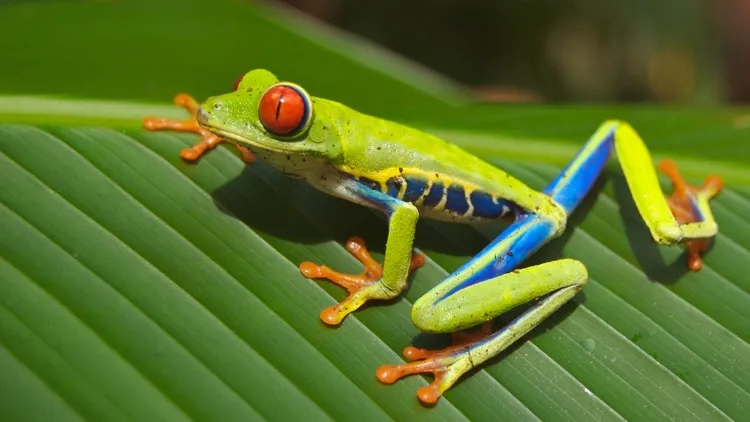The Vital Role of Frogs: Nature's Ecological and Scientific Marvels...!!!
Frogs play a crucial role in our ecosystems and have significant uses in scientific research, medical applications, and even cuisine. Their diverse adaptations and fascinating behaviors continue to captivate scientists, students, and nature enthusiasts alike.

Frogs are fascinating amphibians belonging to the order Anura. With a wide array of species, each showcasing unique characteristics and habitats, frogs play vital roles in various contexts.
Common Types of Frogs
1. American Bullfrog (Lithobates catesbeianus)
-
Description: This large frog, native to North America, is famous for its deep, resonant croak.
-
Habitat: Found in freshwater ponds, lakes, and marshes.
-
Uses: Bullfrogs are often used in biological research and education. They are also harvested for their legs, which are considered a delicacy in some cultures.
2. Poison Dart Frog (Dendrobatidae family)
-
Description: These vividly colored frogs are native to Central and South America.
-
Habitat: Typically found in tropical rainforests.
-
Uses: Indigenous people use the toxic secretions of these frogs to poison their blow darts for hunting. In research, these frogs' toxins have potential medical applications.
3. Tree Frog (Hylidae family)
-
Description: Known for their adhesive toe pads that allow them to climb and stick to surfaces.
-
Habitat: Found in trees and shrubs near water sources in various climates.
-
Uses: Tree frogs are often used in ecological studies to understand their role in ecosystems and their adaptations for arboreal life.
4. Leopard Frog (Lithobates pipiens)
-
Description: Named for their distinctive spotted pattern, these frogs are common in North America.
-
Habitat: Found near ponds, lakes, and slow-moving streams.
-
Uses: Leopard frogs are extensively used in scientific research, particularly in studies related to embryology and physiology.
5. African Clawed Frog (Xenopus laevis)
-
Description: This aquatic frog is known for its clawed toes and smooth skin.
-
Habitat: Found in sub-Saharan Africa in stagnant or slow-moving water bodies.
-
Uses: Widely used as a model organism in biological research, especially in studies of developmental biology and genetics.

Uses of Frogs
Scientific Research
Frogs are invaluable in scientific research due to their diverse biological traits. They serve as model organisms in developmental biology, physiology, toxicology, and genetics. Species like the African Clawed Frog and the Leopard Frog are frequently used in laboratories for studying embryonic development, regeneration, and environmental monitoring.
Medical Applications
Certain frog species produce toxins with potential medical applications. For example, the poison dart frog's toxins are being studied for their potential use in painkillers and other pharmaceuticals. Frog skin secretions have also been found to have antimicrobial properties, which could lead to the development of new antibiotics.
Ecological Indicators
Frogs are considered important ecological indicators due to their sensitivity to environmental changes. Their presence or absence in an ecosystem can provide valuable information about the health of the environment. Monitoring frog populations helps scientists assess the impact of pollution, climate change, and habitat destruction.
Education
Frogs are commonly used in educational settings to teach students about anatomy, physiology, and ecology. Dissecting frogs allows students to learn about the internal structures and functions of amphibians, providing hands-on experience in biological studies.
Culinary Uses
In some cultures, frog legs are considered a delicacy. Species like the American Bullfrog are harvested for their meat, which is often prepared in various culinary dishes. Frog legs are known for their tender texture and mild flavor, resembling chicken.
Frogs play a crucial role in our ecosystems and have significant uses in scientific research, medical applications, and even cuisine. Their diverse adaptations and fascinating behaviors continue to captivate scientists, students, and nature enthusiasts alike.
What's Your Reaction?

















